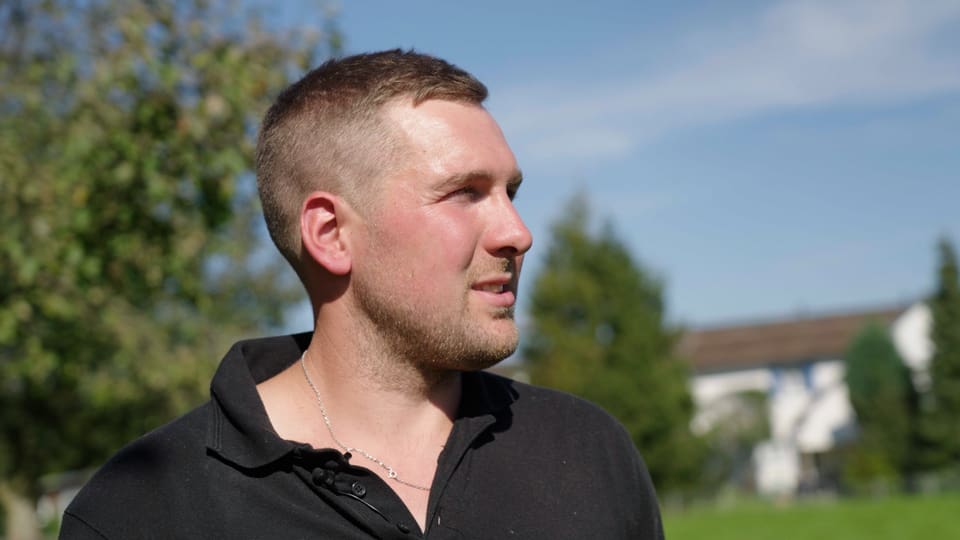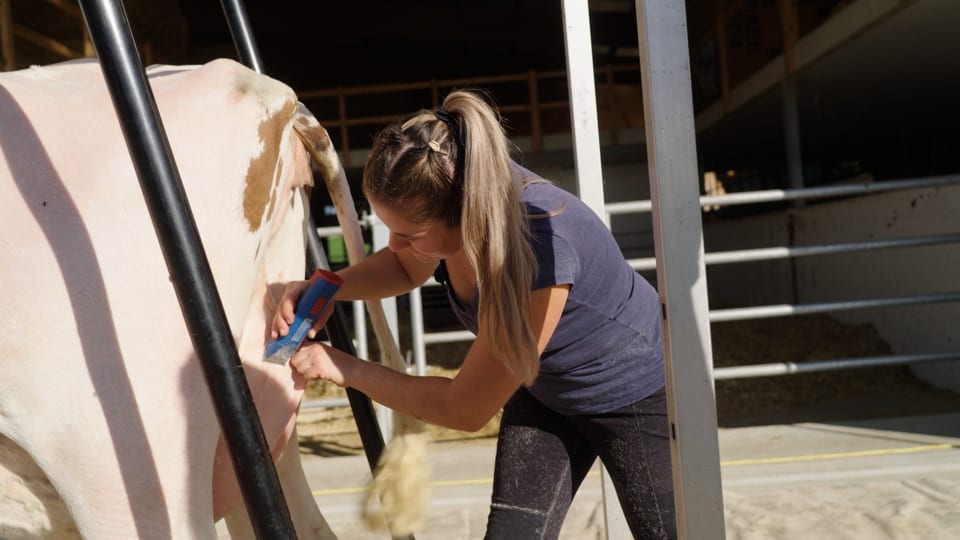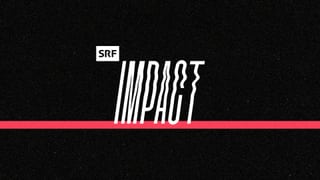Contents
High-performance cows that are pushed to the limit every day – criticism of this type of dairy farming comes not only from animal rights activists, but also from the industry itself.
“Cheap milk and a calf that grows up with its mother – there is simply no such thing.” 27-year-old Bettina Belser runs a modern dairy farm. It is clear to her that many people have lost touch with agriculture. They wouldn’t know what actually lies behind a glass of Swiss milk or a piece of cheese. “There are milking robots at work and not farmers milking the cows individually.”
Legend:
Bettina Belser also shows the most beautiful cows at shows, where they are shaved and styled.
SRF
The work of cow farmers seems hard and not very lucrative: every day two Swiss farmers give up dairy farming – according to Belser, the low milk price is often the reason for this. Many farms therefore want to produce as much milk as possible: They rely on high-performance cows that produce up to 30 kilograms of milk a day.
Belser also follows this strategy: “I can produce more milk with fewer cows.” For the young farmer, this may be the right approach. For many dairy farmers, however, things hardly add up at the end of the year. Because more and more milk does not automatically mean more income – the costs of expensive concentrated feed put pressure on the balance sheet. In addition, the large and powerful cows are often more susceptible to illness – in such cases, not only the cows but also the farmers’ wallets suffer from veterinary costs.
Pure milk machines
This type of breeding is also criticized by animal rights activists. Caroline Mulle from the Foundation for Animals in Law (TIR) says: “The breeding of high-performance animals is becoming increasingly grotesque. Some of the cows have such large udders that they can no longer move as is typical for the species.” The animals would be reduced to mere milk machines.
Depending on the breed, cows in Switzerland produce almost 27 percent more milk than they did 25 years ago. In addition, the animals in breeding are always adapted to the needs of people, at the expense of their own needs, Mulle complains.
Small, round, efficient
Oliver Vogt shows how we could do business better and in a more animal-friendly way. The farmer works with smaller and, according to him, more efficient animals. His approach: prefer less milk, but also lower feed and veterinary costs. He says: “The calculation works out for me, the animals are less susceptible to diseases and they are much cheaper to keep.” Vogt doesn’t venture too far into the branches, but speculates that the price of milk could even rise if less milk were produced, “because the supply would then decrease and we would have to export less abroad.”

Legend:
Above all, Oliver Vogt relies on cheap production.
SRF
The 35-year-old is not the only one who produces based on this model. The “IG Neue Schweizer Kuh” has set itself the goal of promoting the breeding of efficient dairy cows. This interest group now has over 60 members. According to However, according to a study by the agricultural research institute “Agroscope”, many farmers could produce more efficiently according to this standard.
For Bettina Belser it is clear that there is no uniform and simple solution for a turnaround. The initial situation varies from farm to farm and adjustments are often costly or impossible to implement. However, the trend towards ever more productive cows is hardly justifiable, says farmer Oliver Vogt, “a return to nature would be desirable”.

